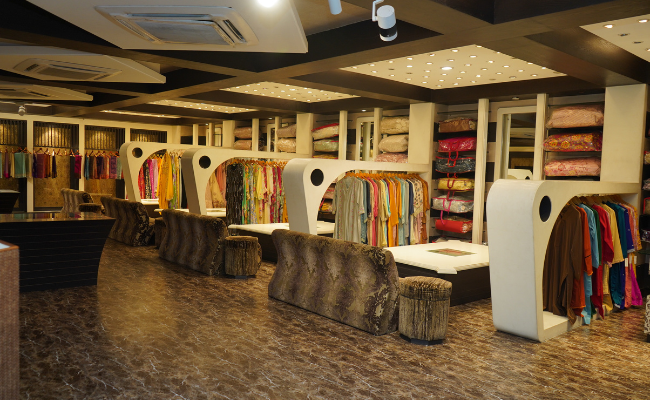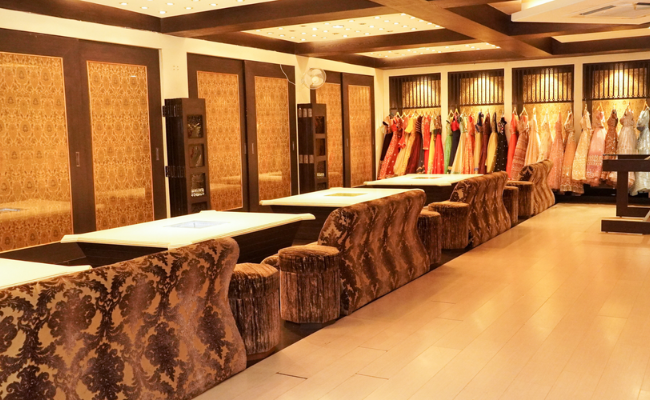Article: The Art of Draping: Mastering Different Saree Styles

The Art of Draping: Mastering Different Saree Styles
A saree is more than just a piece of fabric; it is a timeless symbol of elegance, tradition, and grace. Across India and beyond, saree draping has evolved into an art form, with each region showcasing its unique style. Whether you're looking to embrace heritage or add a modern twist, mastering different saree draping styles can transform your look effortlessly.
1. The Classic Nivi Drape (Andhra Pradesh)
The most commonly worn saree style, the Nivi drape, is popular for its ease and elegance. The pallu is neatly pleated and draped over the left shoulder, while the pleats are tucked in the center, creating a structured and graceful silhouette.
2. The Bengali Drape (West Bengal)
Known for its majestic and airy look, the Bengali drape has no pleats in the front but instead features wide box pleats that allow free movement. The pallu is draped over both shoulders, often adorned with traditional keys or ornaments.
3. The Gujarati Seedha Pallu Drape (Gujarat & Rajasthan)
Distinct from the Nivi style, the Gujarati drape features the pallu coming from the back and draped across the front. This style is often seen in festive and wedding ensembles, as it beautifully showcases intricate saree borders and embroidery.
4. The Maharashtrian Nauvari Drape (Maharashtra)
The Nauvari (nine-yard saree) is draped like a dhoti, allowing ease of movement. Traditionally worn by warriors and dancers, this style is now popular for festive occasions, exuding strength and elegance.
5. The Madisaru Drape (Tamil Nadu)
Worn by Tamil Brahmin women, the Madisaru drape involves wrapping the saree in a way that resembles both a skirt and a pallu, allowing for a structured yet graceful look, ideal for religious occasions.
6. The Kerala Mundum Neriyathum (Kerala)
A simple and sophisticated two-piece saree drape, the Mundum Neriyathum consists of a lower wrap (Mundu) and an upper drape (Neriyathu). It is often worn in pristine white with golden borders, signifying purity and tradition.
7. The Modern Indo-Western Drape
For contemporary fashion enthusiasts, the Indo-Western drape combines modern styling elements with traditional sarees. Experiment with belted drapes, pant-style sarees, or cape-style pallus to create a fusion look that is both chic and comfortable.
Draping: A Personal Expression
Each saree drape tells a story, reflecting culture, history, and individuality. Whether you choose a traditional style or a modern twist, the way you drape your saree can make a bold fashion statement. So, explore, experiment, and embrace the art of saree draping to celebrate your personal style!




Leave a comment
This site is protected by hCaptcha and the hCaptcha Privacy Policy and Terms of Service apply.